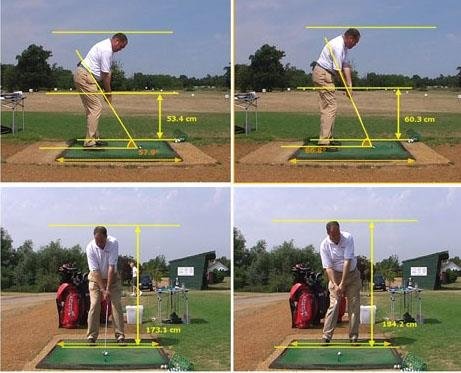
The Many people who come to my clinic for Total Knee replacement surgery enquire if they will be able to indulge in sports activities after total knee replacement. My answers is yes to many of these sport enthusiasts.
If you have a knee replacement you may want to put away the tennis racquet and get out the bike. A new study shows biking and treadmill walking are two of the safest exercises for knee replacement patients. More surprisingly, golf swings were almost as tough on knees as jogging and tennis.
Surgeons typically advise patients to resume physical activity when they are able. But advice about which activity is best has been subjective.
Your knee will probably last for your entire lifetime if it is subjected to no stresses at all! The aim is therefore to minimize stresses. You will be able to take part in physical activities which were impossible before surgery. You can walk as much as you like.

Stresses on the knee when driving the golf ball
You can ballroom dance, play golf, and ride a stationary or mobile bike. It is best to use a golf cart so that you don’t have to carry a heavy bag of clubs if you play golf. Many of my patients returned to playing golf at around 5months after TKR. Research suggests that 34 % patients noted mild to moderate pain during and after play. Their handicap rose with 4,6 strokes and their drive decreased an average of 12 meters. One has to modify the swing and reduce the overload on the replaced knee.
Bicycling on a level surface is quite clearly less stressful then biking in hill country. Skiing smooth, groomed slopes in good light is relatively safe, but falls could result in serious injury to someone with a knee replacement. Only 21 % of patients had approval from their surgeon for playing tennis. Majority reported that return to active tennis was the main reason for their Total Knee Replacement. These patients played both singles and doubles tennis three times a week on average.It is recommended that one plays only doubles tennis since singles tennis is a high impact sport.

Phased exercise program following TKR
Traditional causes of failures in Total Knee Replacement are loosening of the cement from the bone interface, and the wearing out of the plastic inserts. Much of this observed loosening was due to the weakening of the bone (osteoporosis) as patient’s age and decrease their activities. Resistance exercise is the only known effective way to build bone. Therefore, by increasing your weightlifting, cycling, skiing, and hiking, you decrease the chance of the component loosening by strengthening the bone. Additionally, the stronger the muscles are, the less force goes through the joint. Muscle absorbs force, guides more normal mechanics, and protects the joint.
The wearing out of plastic components has been a major concern. This most often occurs due to malposition or poor tracking of the joint. Today, tracking has been dramatically improved by computer-guided accuracy of joint replacement. Since most modern knee replacements have highly durable (and interchangeable) plastic trays, why limit a lifetime of sports by the fear of them wearing out?
The peak forces vary depending on the running surface, the smoothness of the gait, shoe wear, and other factors. So if you choose to run, run with great form on soft surfaces with new, shock-absorbing running shoes. (Cycling is a more logical sport, as it limits the impact factor—but logic is not the reason we run.) In my years of practice, I have never seen a total knee become worn out from running nor have any of my peers.
Total body fitness conditioning is the key to a long-lasting joint replacement. So get back to your exercise, work on building muscle, and enjoy your freedom to move.
The advice I give to my patients following Total Knee Replacement “Postpone sport and recreational activities until the musculature around the new knee joint is sufficiently strong to protect the joint and prevent an unnecessary trauma.
It is important to realize that you have good chance to return to the sports you practiced already before the surgery.
